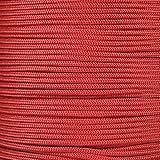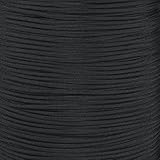In the United States, millions of people venture into the wilderness each year, seeking adventure and tranquility. However, unforeseen challenges can arise, from unexpected gear failures to a sudden need for fire or first aid. Being prepared with practical skills can dramatically improve safety and enjoyment during these outdoor excursions. The accompanying video offers a fantastic glimpse into some lesser-known, yet incredibly effective, survival and bushcraft hacks that every outdoor enthusiast should master.
Mastering basic bushcraft and survival techniques transforms a potential crisis into a manageable situation. These simple, clever solutions often utilize common items or readily available natural resources. By learning these resourceful methods, you empower yourself to tackle common outdoor problems with confidence. This guide will elaborate on the brilliant tips presented in the video, providing additional context and insights to deepen your wilderness knowledge.
Essential Gear: The Versatility of Duct Tape
Many outdoor enthusiasts often overlook the sheer power of a simple roll of duct tape in their survival kit. The video highlights how duct tape, especially a stronger variety like Gorilla Tape, serves countless purposes in the backcountry. Its robust adhesive and durable material make it an invaluable tool for both quick fixes and more substantial improvisations.
You can use duct tape as an exceptional fire-starting aid, especially in damp or windy conditions where kindling struggles to ignite. It burns readily and consistently, providing a longer-lasting flame to catch your tinder bundle. Beyond fire, duct tape excels at repairing torn tents, patching holes in sleeping bags, or even mending a broken hiking pole in a pinch. Its adaptability means that your imagination truly sets the limits for its utility in an outdoor environment.
Fire from Fumes: Reviving a Spent Lighter
Imagine finding yourself in the wilderness with a lighter that has run out of fuel. This common scenario can leave many feeling helpless, but the video reveals an ingenious method to still produce a flame. A seemingly empty lighter still contains a tiny ferro rod and striker mechanism, which are the key components for generating sparks.
To employ this clever fire-starting technique, use a knife to shave tiny, fine plastic shavings from the lighter’s body; these will serve as your primary tinder. Next, carefully roll the striker wheel of the lighter without creating a spark, allowing it to shave off minute particles of the ferro rod into your plastic tinder pile. Once a noticeable gray layer of ferro dust accumulates, strike the wheel firmly, directing the spark onto the mixture. This combination creates a hot ember that can ignite your tinder, demonstrating remarkable resourcefulness.
Paracord: The Ultimate Multi-Purpose Boot Lace
Standard boot laces often fall short when faced with the rigors of the outdoors, frequently breaking or wearing out quickly. Replacing them with paracord boot laces is a strategic upgrade that significantly enhances durability and versatility. The video explains that paracord is practically unbreakable as a lace, standing up to immense strain and abrasion.
Beyond its strength, paracord’s true value lies in its multi-strand construction. Each length of paracord contains several inner strands that can be extracted and used for various tasks, such as fishing line, dental floss, sewing thread, or even snares. To prepare paracord for lacing, simply cut it to the length of your original laces and melt the ends to prevent fraying. A helpful tip is to stiffen the last inch or so of each end with heat, making it easier to thread through boot eyelets. While new paracord laces might be slick initially, they quickly roughen up with use, providing a secure and reliable tie.
Keeping Your Cordage in Check: The Paracord Bundle Hack
Carrying loose paracord in your pack often results in a tangled mess, making it difficult to access when needed. The video demonstrates a simple yet effective method for coiling and securing paracord, ensuring it remains organized and ready for use. This bundling technique prevents knots and snarls, saving valuable time and frustration in the field.
To create a tidy paracord bundle, begin by wrapping the cord around your hand or fingers until you have a compact coil, leaving approximately four or five feet as a tail. Take the tail end and wrap it tightly around the coiled bundle multiple times, pulling it snug with each revolution. Finish by tucking the end of the tail under a few of the wraps, pulling it tight to secure the entire bundle. This self-locking method keeps your paracord neatly contained, allowing you to easily store it in your pack without fear of it unraveling.
Splitting Firewood Like a Pro: Safety and Efficiency
Splitting firewood can be a challenging and potentially hazardous task, especially if your axe frequently gets stuck in the wood. The video provides a couple of ingenious tips that not only increase efficiency but also significantly improve safety. These methods help ensure cleaner splits and reduce the risk of injury during the process.
One primary technique involves slightly tilting the axe head to the side just before impact. This subtle angle creates outward pressure upon striking, forcing the wood halves apart more effectively and preventing the axe from embedding itself. Additionally, always look for natural splits or cracks in the log and aim your first strike along one of these existing lines; this greatly enhances the chances of a clean break. Spreading your legs apart while splitting creates a stable base and ensures that if your swing misses or glances off, the axe head will fall between your legs rather than striking your shins.
Crafting a DIY Draw Knife in the Wild
A draw knife is an incredibly useful tool for shaping wood, debarking logs, or preparing material for various bushcraft projects. If you find yourself in the woods without one, the video shows how to quickly improvise a functional draw knife using minimal resources. This expedient tool can be a game-changer for detailed woodworking tasks in a survival situation.
To construct a makeshift draw knife, select a sturdy stick about eight inches long to serve as your handle. Firmly bind one end of the stick with paracord or any available cordage to create a secure grip. Then, carefully drive the tang of your sheath knife, or even a robust folding knife, into the center of the bound end of the stick. This setup provides a handle on both sides of the blade, allowing for excellent control and leverage when pulling the knife towards you to shave wood. This clever adaptation transforms a standard knife into a more specialized carving tool.
Sharpening Your Blade: Natural Wilderness Methods
A sharp knife is a crucial tool for any outdoor activity, but maintaining its edge in the wilderness can be a challenge without traditional sharpening stones. The video presents two simple yet highly effective natural methods for putting a keen edge back on your blade. These techniques rely on readily available natural materials to restore your knife’s cutting power.
The most straightforward approach is to find a flat, fine-grained stone; many natural rocks possess abrasive qualities suitable for sharpening. If a suitable stone is not available, a more ingenious method involves using the end of a piece of cut firewood. Smear some clay or soil with a fine grit onto the flat end of the wood. The abrasive particles within the mud act like a fine sharpening paste. By carefully rubbing your blade against this prepared surface, you can achieve a surprisingly sharp edge, allowing your knife to remain a reliable tool for all your wilderness needs.
Quick Seat: The Improvised Wilderness Stool
Finding a comfortable place to rest off the cold or damp ground can significantly improve your comfort and energy levels in the wilderness. The video illustrates a brilliant, cordage-free method for constructing a stable stool using four similarly sized poles. This quick-build design provides an elevated seating option without requiring any knots or binding materials.
To create this improvised stool, find four sturdy poles of approximately equal length, ideally around two to three feet long. Arrange them in a square formation on the ground, with their bases spread slightly outward. Interlock the top ends of the poles in a self-supporting fashion, essentially creating a stable, woven top that can bear weight. The trick is to lean them against each other securely so that the pressure from above locks them into place. This simple yet effective structure ensures a reliable and comfortable perch during your outdoor adventures.
Natural Bug Repellents from the Wild
Mosquitoes and other biting insects can quickly turn an enjoyable outdoor experience into an irritating ordeal. While commercial bug sprays are effective, you might find yourself in the woods without any. The video highlights how nature often provides its own solutions, showcasing how certain plants possess natural insect-repelling properties.
For example, in the Rocky Mountains, spearmint is abundant, and rubbing its crushed leaves on your skin can offer temporary relief from bites. While natural repellents may not last as long or be as potent as synthetic options like DEET, they are excellent alternatives in a pinch. Identifying local plants with insect-repelling qualities is key; common options include citronella, lemon balm, catnip, and sometimes even pine needles. Crushing the leaves or needles to release their aromatic oils and then rubbing them directly onto exposed skin can deter many common pests, providing a much-needed reprieve from insect attacks.
Nature’s First Aid: Antiseptic from a Fir Tree
Minor cuts and scrapes are common occurrences in the wilderness, and keeping them clean to prevent infection is paramount. The video points out a remarkable natural antiseptic readily available from fir trees. For thousands of years, indigenous cultures have utilized plants for medicinal purposes, and fir tree pitch is a prime example of nature’s healing power.
If you examine the bark of a fir tree, you will often find small, resin-filled blisters. Pushing on one of these blisters releases a sticky, viscous pitch. This natural resin possesses strong antiseptic properties, making it an excellent natural dressing for wounds. Applying a small amount of fir pitch to a clean cut or abrasion can help to sterilize the area and form a protective barrier against dirt and bacteria. Always ensure the wound is as clean as possible before applying any natural remedies, and seek professional medical attention for serious injuries.
Wilderness Hygiene: Finding Natural Toilet Paper
Attending to personal hygiene in the backcountry is essential for comfort and health. When conventional toilet paper is unavailable, finding a natural alternative becomes a necessity. The video humorously but effectively guides you toward selecting the best natural options, emphasizing absorbency and softness.
The key to choosing natural toilet paper is to identify broad, soft, non-irritating leaves that are free of any spines, hairs, or irritating sap. Good choices often include large, velvety leaves from plants like mullein, certain types of moss, or smooth, pliable leaves from specific trees. Always avoid plants like poison ivy, poison oak, or any unknown plant with a strong odor or unusual texture. Before use, ensure the leaves are dry and clean. This simple bushcraft tip can make a significant difference in your overall comfort and hygiene during extended stays in the wilderness, allowing you to handle basic needs responsibly and effectively.











